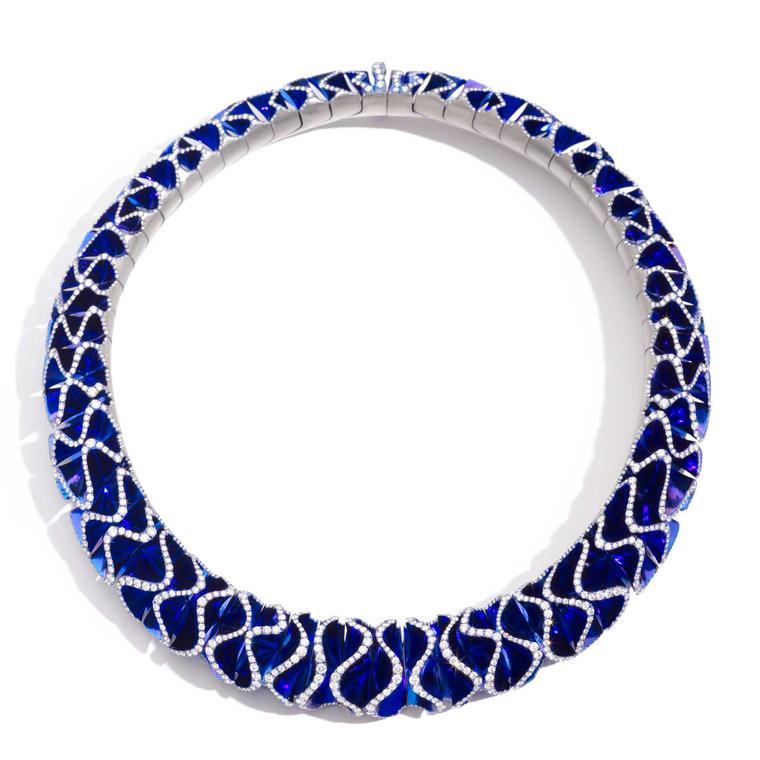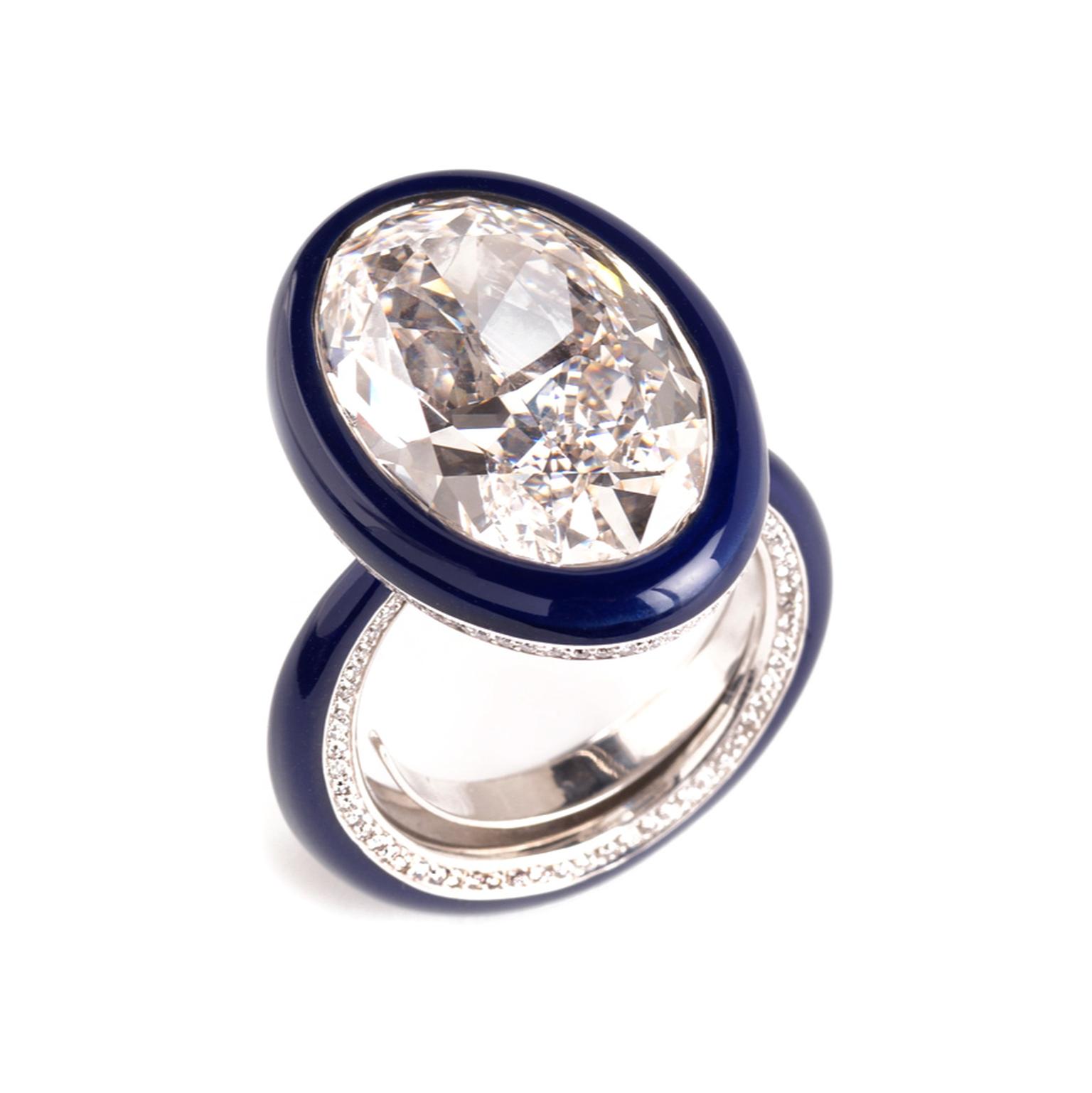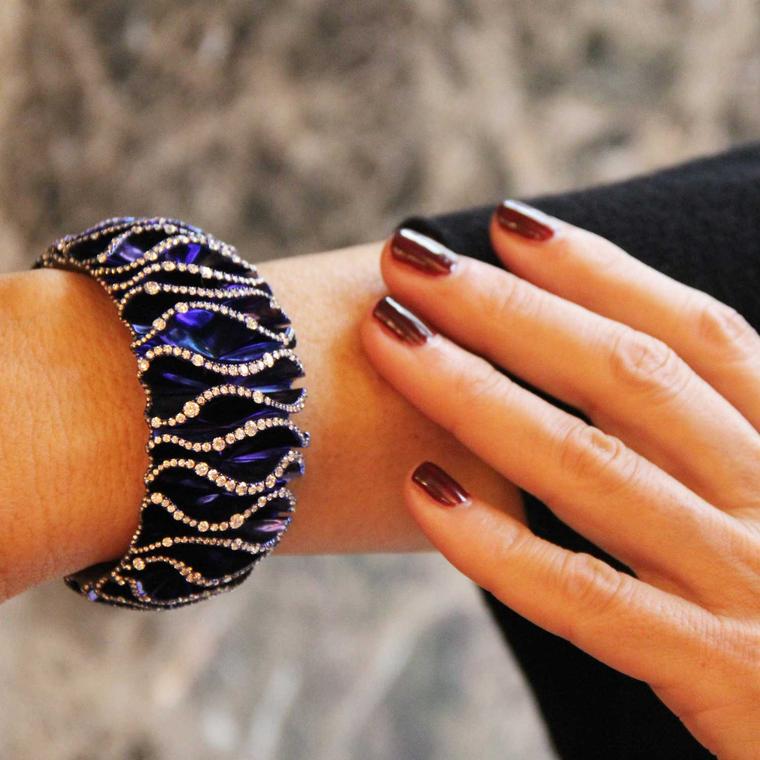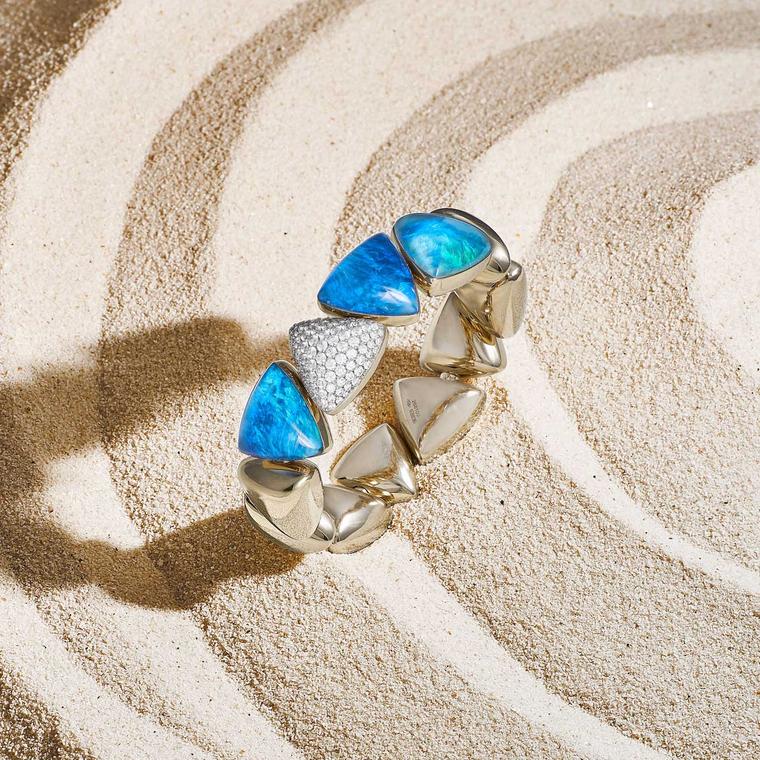You may have noticed that the world of jewellery is slowly but surely becoming a brighter place thanks to the growing trend for using coloured metals and other materials to create new effects that we are seeing across a growing number of the high-end jewellers.
The traditional way to add a colour kick to a jewel came from the rainbow of gemstones provided by Mother Nature or the application of enamel. But newer materials, including titanium, ceramic and aluminium, and even coatings on gold – as seen on Fernando Jorge’s opal and tanzanite earrings – add a new meaning to playing with colour.
And the hue du jour for these brave new jewels is blue. A fact that was elegantly confirmed when Vhernier’s Blue Velvet titanium necklace was unveiled in December.
The most prevalent new metal is titanium, which has, for the past decade or so, gained favour thanks to its strength, lightness and the fact that it can be treated to create different colours.
Naturally grey and with a melting point of an infernal 1600ºC, titanium is devilishly difficult to work. Those who persevered have been rewarded with a metal that can be whittled down to minimal dimensions while retaining its strength, ideal for settings and larger pieces such as Chopard’s finger-spanning waveform ring. But, until now, coloured titanium has been something of a behind-the-scenes hero.
Vhernier is looking to change that. Carlo Traglio, Chairman of Vhernier, says of the Blue Velvet: “We are the first to make a jewel of this quality and size in titanium. We are making titanium the prima donna of this jewel. It is the first of its kind on this scale and it took us two years to get it right.”
With 300 hours of workmanship invested in the jewel (pictured at the top of article), the titanium was treated to a 1/10th mm coating of blue. “We chose blue because it is a fabulous colour and the one that works best with titanium. The 2,200 diamonds create fabulous reflections on the metal.”
Being at the avant-garde of materials requires patience and deep pockets: “The price of a titanium or gold jewel is the same because of the extra cost of working the titanium,” explains Traglio.
One of the most admired artist jewellers of our times is Wallace Chan, who weaves together his extreme creativity with exceptional craftsmanship and brilliant colour combinations. "Often I convey certain symbols or emotions through the blue, such as calmness, tranquility, purity, sky and sea, clouds and water, transcendence, surrealism, wisdom, soulfulness, the cosmic,” says Chan.
“It is always important to harmonise the metal and the stone, which titanium’s colourful nature has made possible. For example, the Beauteous Days ring features an exquisite sapphire main stone. For it to remain the ultimate focal point, I decided to use blue as the ring’s overall tone.”
Although it may seem counter intuitive to cover up gold, Brazilian-born, London-based award winning jeweller Fernando Jorge chose to coat gold in blue nano ceramic to amplify the beauty of the boulder opals and tanzanites in his Arara earrings. "I experimented with blue rhodium plating, but there was absolutely no control on the resulting colour, and I was told it would wear off with time,” explain Jorge. "Due to the rarity and high value of the stones, I didn’t want to use any other metal than gold, which is the only metal used in all my pieces so far."
London jeweller Glenn Spiro is also a fan of azure hues and he uses both titanium and ceramic to achieve new looks: “Blue is a very reflective colour that looks great with diamonds. Titanium, and now ceramic, give us more choices. I like to play around with superb gems and colour and make it more fun without losing the elegance of the piece.” Case in point: Spiro surrounds an oval-cut 10.63 carat diamond with a band of glossy navy blue ceramic. The effect is different enough to stand out, but not alien. Solange Azaguray-Partridge, meanwhile, covers white gold in ceramic to match the stones for a totally colour-infused effect.
No stranger to fun, Suzanne Syz of Geneva makes jewels with a sense of humour and irony for sophisticated collectors. “I love matching the color of the metal with the centre stone, it gives the impression the stones are floating. Being able to use colours on the metal is really something new for the 21st century. Light and medium blue are my favourites as it gives a look that can be worn in a relaxed way (with blue jeans) but is also very elegant and sophisticated with an evening dress.”
Ever challenging the conventions of luxury, Hemmerle has made an art of using unusual materials and mixing and matching the expected with the very unexpected. Christian Hemmerle, fourth generation to run the Munich-based house, says: “We first treated metal to become blue with The [AL] Project, where we set out to explore the unique properties of aluminium. Through a process of anodizing we create aluminium in a variety of hues that complements the natural colours of the stones.”
The effortless beauty and harmony of Hemmerle's aluminium and turquoise earrings are a shining example of innovation in pursuit of beauty. The subtle difference of the two blue hues of the aluminium orbs alongside the turquoise creates a previously unattainable effect and that, to me, is an art form.
And expect to see more of this exciting new experimentation as colour moves from the stone into the very heart of a jewel. Many of these coatings and materials were originally pioneered by the watch industry so I predict more coatings such as DLC (diamond-like carbon) and fusion materials to filter through into jewellery.
And it will be also be a bright future, as Christian Hemmerle suggests: “We were originally advised that aluminium could yield up to six different hues or patinas. However, we have managed to achieve more than 35 hues through the research at our atelier.”

























